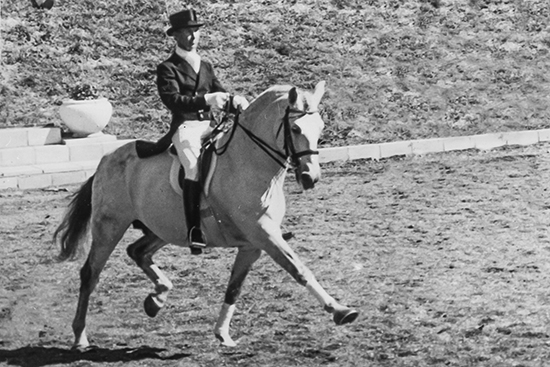 Body Dominant versus Hand Dominant.
Body Dominant versus Hand Dominant.
Malcolm Barns is back with some more observations on the Art of Dressage
Story: Malcolm Barns, Photos: Roz Neave & Archives
To be able to correctly Half Halt – a translation from the German Halbe Parade, it is necessary to have a three-point seat as opposed to a two-point perching seat, which is uncomfortable for both the horse and rider. It is imperative to round the base of the spine to be able to sit on the back of the skateboard-like seatbones, to shift the pelvis forward and upwards. As the pelvis is, of course, attached to the spine, and as it rocks with the horse’s movement, the spine oscillates making for additional suppleness for the rider and comfort for the horse.
Transitions and changes in the horse’s movement should be done discreetly by changing the balance and movement in the rider’s body.
To be a comfortable weight on the horse’s back, the rider should feel horse’s movement in the three paces and be able to move with them. There are three clear phases of the rider’s seat in every stride in each of the three paces of the ridden horse. The first is a positive forward swing of the seatbones, an obvious stop time and a passive back swing, as with a child on a swing in the park. Likewise it is possible to make larger or shorter arc on the swing, or to stop a swing by contracting our body weight and movement.
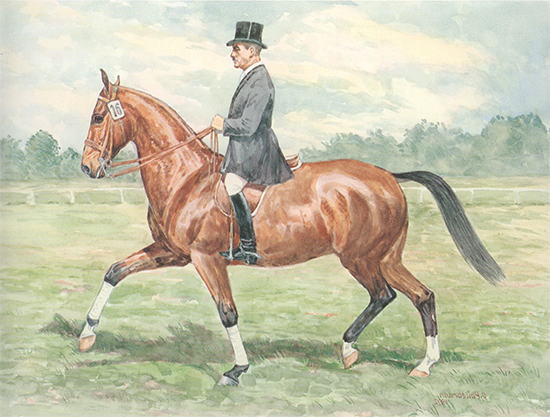 The positive short or longer forward swing of the seatbones combined with the obvious stop time, reinforced by lower legs again shorter or longer, up to the hands, sets the rhythm and tempo. That is the half-parade! Perseverance and repetition, with frequent rewarding of the horse for response, will bring about a better and more progressive result than trying to achieve the same using hand dominance.
The positive short or longer forward swing of the seatbones combined with the obvious stop time, reinforced by lower legs again shorter or longer, up to the hands, sets the rhythm and tempo. That is the half-parade! Perseverance and repetition, with frequent rewarding of the horse for response, will bring about a better and more progressive result than trying to achieve the same using hand dominance.
It is much more progressive – and correct – to indicate the contact to the hand by pushing forward with the seat from the back to the front than pulling backwards with the hand against the seat.
“The bit is the axis around which the horse’s movement balances.”
(General Piemack, Germany)
And yet there is nothing new about this. Wilhelm Müseler’s book Riding Logic was translated into English and published first in 1937.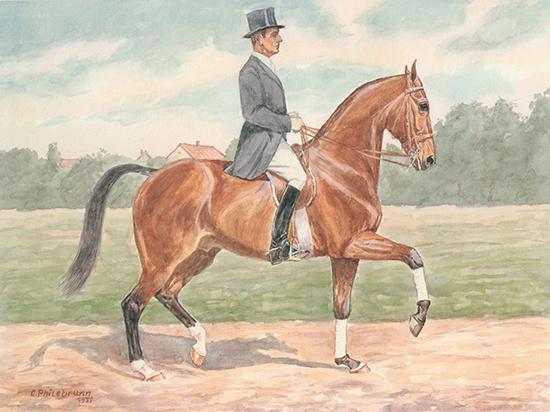
“The bit is the axis around which the horse’s movement balances.”
Self-Carriage – Balance
Self-carriage does not feature on the training scale, so, unfortunately, is almost 100% neglected. The training scale is not set in bricks and mortar. The first two steps are frequently swapped about. Reiner Klimke put Relaxation / Suppleness first (rather than Rhythm) while some other authorities have added ‘Obedience’, since this is not necessarily covered by Contact.
If the rider does not have a secure seat, independent of the reins, then inevitably there will be a strong contact, just to maintain the rider’s seat, and the horse defends himself, returning the strong contact. The horse is then ‘on the forehand’ resulting in a mediocre performance, and is usually behind the vertical as well. The horse’s hind legs are retarded, it is not free to increase the engagement, the horse’s back is contracted and unable to swing freely.
Once theses errors and restrictions have been introduced, it can be difficult to correct them and mouth problems may emerge. 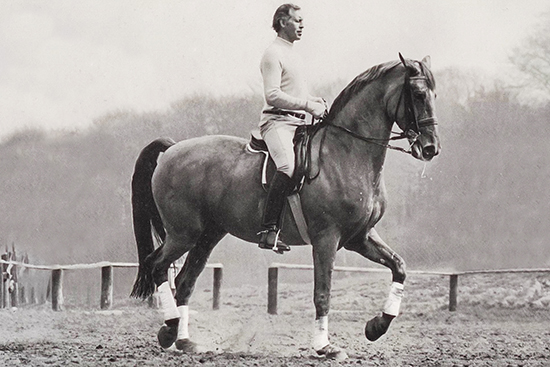
The Germans teach überstreichen – frequently stretching the inside, or both reins to make loops, testing and offering self-carriage, the French do something similar, but they call it descente de main.
Judges should be able to clearly see self-carriage and can mark accordingly the comfort and correctness of the horse’s movement.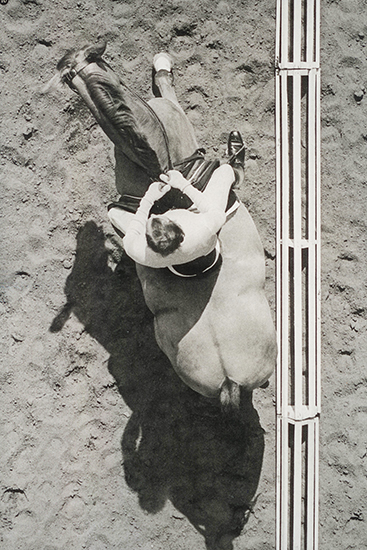
TAKT
When we are a learner rider we are taught that rhythm is the first step on the training sale. This is true, however when we become a competition rider the rhythm becomes more strict if we are to have the best performance from our horse – cadence and expression. We have to move within a couple of beats either side of the following beats per minute. This is called TAKT.
Walk – 95 Beats Per Minute
Trot – 150 Beats Per Minute
Canter – 98 Beats Per Minute
Passage/Piaffe – 108 – 111 Beats Per Minute
So buy a pocket metronome from a music store (approx $40) especially if you want to compete in freestyle to music dressage. These times all apply to variations in the paces of your horse and should help to improve them. For example: not running in lengthened strides and not slowing down in canter pirouette or lateral exercises.
It also helps with the selection of suitable music. There is so much superb classical music, which is suitable to produce a test that comes into an art form and not a sideshow. So, leave the saddle off your horse and settle down with your stopwatch and CDs from your local library for a couple of pleasant hours and get on with your choreography, before you put the saddle back on.


Very helpful. Love it!